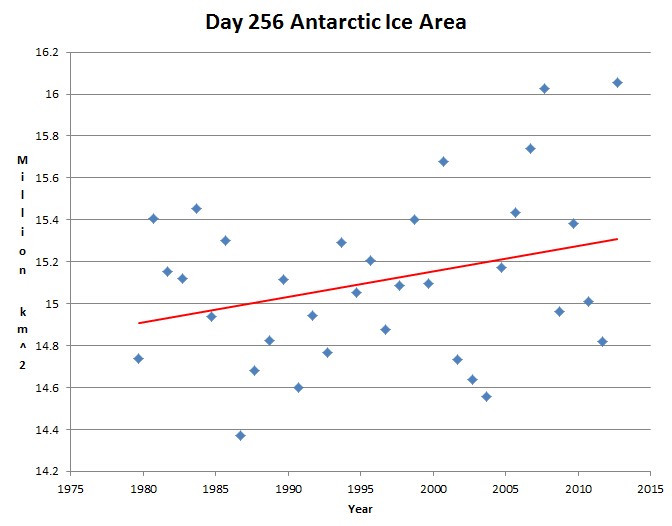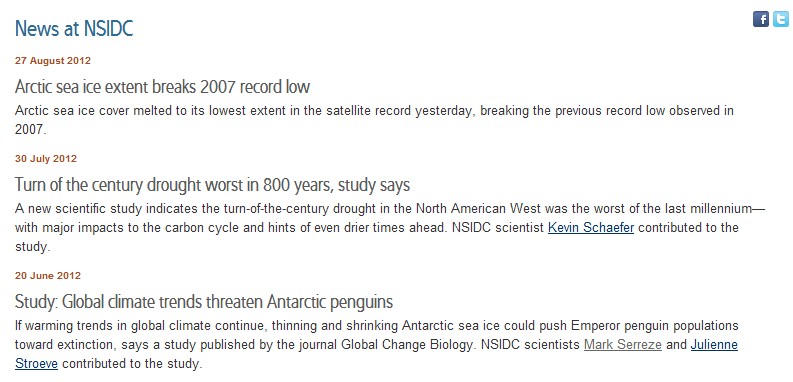"Day 258 of 2012 is the highest for this date since satellite scanning of Antarctic ice areas commenced 33 years ago" the New Zealand Climate Science Coalition announced today. "It is also the fifth highest daily value on record." Coalition chairman, Hon Barry Brill, says the most remarkable aspect is the extent to which the 2012 area exceeds normal Antarctica averages. "The sea ice cover yesterday was 311,000 square kilometers above the 1979-2012 average. The surplus ice is
more than twice the area of New Zealand." The Antarctic dimensions come partly at the expense of Arctic sea ice," said Mr. Brill. "Over the 33-year period aggregate global sea ice volumes have remained steady, but there are fluctuations between the two polar areas from year to year.
The fluctuations are the result of ocean currents and wind patterns, rather than temperatures. Antarctic ice is much more important than that of the Arctic. The area of its sea ice is a million square kilometers larger than the highest value ever recorded in the Arctic. Then, of course, the Antarctic is an entire continent, with more than 90% of the earth's glacial ice," said Mr. Brill. "It is appropriate that this record should occur in a week that
The Listener carries a cover story featuring the winter low point of Arctic ice, along with multiple pictures of calving glaciers and forlorn polar bears," said Mr. Brill. "The magazine has little to say about the Antarctic apart from complaining that it is "poorly understood."
The
author also avoids mentioning the glaring facts that no significant global warming has been recorded in the past 16 years, and that sea level rise is apparently decelerating. "It is unfortunate that under-informed writers, albeit unwittingly, mislead their readers who should be helped to understand the difference between sea ice extent and ice cap ice, both thickness and extent as regards the latter. The ice cap in the Arctic is small compared to the Antarctic. The cap of the Antarctic is increasing in thickness in most places, except around the Antarctic Peninsula. Sea ice extent is largely a consequence of sea surface temperature, ocean currents and wind," said Mr. Brill, who advised those interested in graphic confirmation of Antarctic sea ice readings to refer to
this link as well as
this link.



Comment: Note, this was seven years ago. Since then, Arctic and Green land ice sheet melt has been increasing, with the Greenland sheet melt in 2012 setting an all-time record. Recent winters in the UK and Northern Europe have made it rather clear that we are facing a much colder Northern Hemisphere, which carries the possibility of a new mini, or full scale, ice age. One year soon, winter will arrive but spring and summer may not.